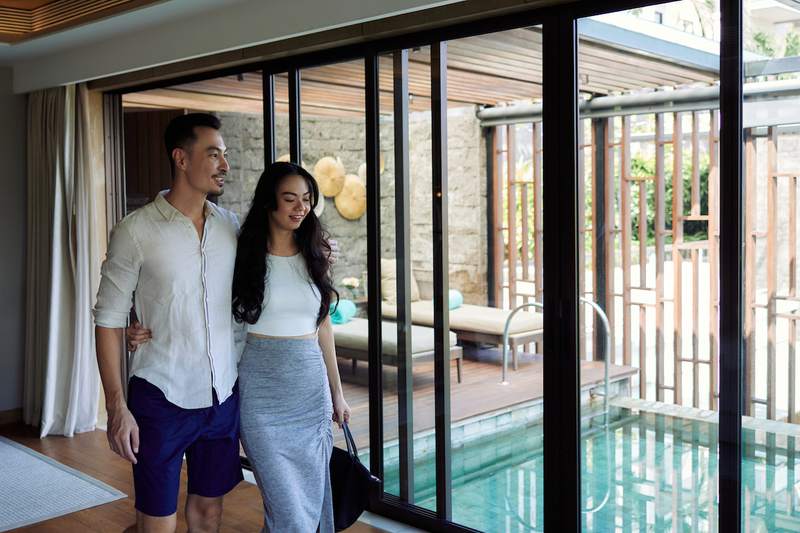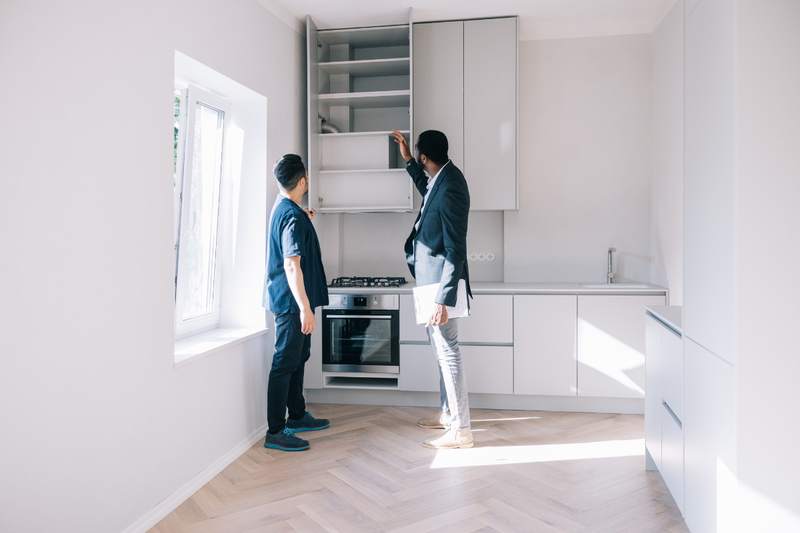When first-time homebuyers are ready to start house hunting, it’s important to know what they want, need, and must have in a home.
You may have a clear idea of what you’re looking for, or your general ideas of what you need may come into focus as you tour homes. Either way, knowing your preferences and making a list of your wants, needs, and must-haves will help you and your real estate agent more easily find available homes that suit you.
- Distinguishing between wants, needs, and must-haves helps streamline your search for a home and manage expectations.
- Listing your preferences helps your real estate agent more easily find a suitable property, saving time and potentially money.
- Understanding your financial capacity, including how much to save for a home purchase, is vital for effective planning.
Why List Wants vs. Needs vs. Must-Haves?
Making a list of wants, needs, and must-haves may feel like busywork, but it can save you time and money as you look for the right home to buy.
Because homes come in so many different types and sizes — from a tiny home or small house all the way up to a mansion — with a wide array of features and amenities, defining your wants, needs, and must-haves lets you quickly zero in on the homes that are the best fit.
Defining Wants, Needs, and Must-Haves
Most homebuyers start out with a general idea of what they want in a home and how much house they can afford, but finding it in the real world is easier said than done. Having a clear list can give you confidence that you’re looking for a home that will meet your needs.
What is a homebuying must-have?
A must-have is a critical home feature that you absolutely can’t live without. For example, you may consider a large kitchen, a certain number of bathrooms, or being near work as must-have features.
Jeff Fruhwirth, a landlord and real estate investor in Cheyenne, Wyoming, says must-haves are so important that you’re willing to walk away from any property that lacks this feature.
“The single most common must-have in real estate in my experience is location,” Fruhwirth says.
Remember that a must-have for you could be optional for someone else. It’s OK to get input from family and friends, but you’re the one who’s going to live in the home, and you should trust your instincts over someone else’s advice.
What is a homebuying need?
Needs are extremely important features that you’re looking for in a home. For example, you may need a two-car garage or home office. When you explain your needs to your agent, they should mostly present homes that include those features.
Fruhwirth says that needs are features you may be willing to add yourself later on, and if multiple needs are unmet in a home, it’s likely the wrong home for you.
What is a homebuying want?
Wants are desired features that you can be more flexible about. For example, you might want a kitchen with an island, but you can live without it if the home otherwise meets your needs.
When looking for a home for himself, Fruhwirth says he considered an attached garage and a sauna as wants. While they would have been nice to have, he wouldn’t have passed up on a house just because these features weren’t present.
Don’t hold back on your list of wants, but also set realistic expectations for what you can afford or expect to find in your desired neighborhood. If a home meets most of your requirements, you may be able to pass on items from this part of your list.
How To Make a Checklist of Wants vs. Needs vs. Must-Haves
Now that you understand the differences between wants, needs, and must-haves, you can create a checklist or use the examples below when searching for your next home.
Download a PDF version of the full homebuyers checklist here.

Home type
Do you want a house, condo, or townhouse? The home type covers the general type of construction and layout. Certain home layouts and styles may be more popular in some regions, cities, and neighborhoods than others.
Home Type Wants vs. Needs vs. Must-Haves
| Feature | Comment | Want | Need | Must-Have |
| Detached house | A single-family home is a stand-alone structure with outdoor space. | ❏ | ❏ | ❏ |
| Condominium | A condo is a unit that’s typically inside a larger building or complex, often with shared amenities. | ❏ | ❏ | ❏ |
| Townhouse | A townhouse is a home that shares one or two walls with other homes. They are individual units and may have a small outdoor space. | ❏ | ❏ | ❏ |
| Multifamily home | Multifamily homes are detached dwellings with more than one living unit. | ❏ | ❏ | ❏ |
| Loft apartment | A loft apartment is a large, open space with few rooms and interior walls. These also may be called studio apartments. | ❏ | ❏ | ❏ |
| Multistory home | Multistory homes are detached single-family homes with two or more floors, not including a basement. | ❏ | ❏ | ❏ |
| Single-story home | Single-story homes, sometimes called ranch-style homes, only have a single ground-level floor with no upstairs. | ❏ | ❏ | ❏ |
| Split-level home | Split-level homes have multiple stories that typically don’t cover the entire floor plan. Split levels often have several smaller staircases connecting rooms and levels instead of a single main staircase. | ❏ | ❏ | ❏ |
| Architecture style | Some buyers want a specific style, such as midcentury modern, Spanish, or Craftsman. | ❏ | ❏ | ❏ |
Parking
Outside of select cities and urban neighborhoods, most Americans have a car and need somewhere to park it at home. Here are the most common parking options for homeowners.
Parking Wants vs. Needs vs. Must-Haves
| Feature | Comment | Want | Need | Must-Have |
| Garage | An indoor garage provides the best security and climate control for a vehicle. | ❏ | ❏ | ❏ |
| Driveway | A driveway provides off-street parking with a guaranteed place to park, but lacks the security of a garage. | ❏ | ❏ | ❏ |
| Carport | A carport is an outdoor covered parking space, offering shade and some protection against the elements. | ❏ | ❏ | ❏ |
| Street parking | Street parking is generally available to the public. In some crowded areas, finding a spot is challenging. Your vehicle also may be more susceptible to break-ins and accidents. | ❏ | ❏ | ❏ |
Bedrooms
The number of bedrooms is a major driver of the property’s size and desirability. Depending on the size of your household, you may want anywhere from a single bedroom to a half-dozen or more.
Number of Bedrooms Wants vs. Needs vs. Must-Haves
| Feature | Comment | Want | Need | Must-Have |
| One bedroom | Homes with one bedroom are ideal for singles or couples on a budget. | ❏ | ❏ | ❏ |
| Two bedrooms | Two bedrooms make a home more comfortable for growing families. | ❏ | ❏ | ❏ |
| Three bedrooms or more | Larger households may prefer three or more bedrooms. In some situations, spare rooms can be used as guest bedrooms, home offices, or space to enjoy a favorite hobby. | ❏ | ❏ | ❏ |
Bathrooms
Bathrooms are an essential part of any home, and specific needs vary by family size, home size, and personal preferences.
Bathroom Wants vs. Needs vs. Must-Haves
| Feature | Comment | Want | Need | Must-Have |
| Number of bathrooms | The average home has two bathrooms for every three bedrooms. | ❏ | ❏ | ❏ |
| Fractional bathrooms | A half bath is a smaller bathroom with no shower or bathtub. A three-quarter bath is often an efficiently arranged bathroom with a walk-in shower and no tub. | ❏ | ❏ | ❏ |
| Bathtub | For many homeowners, a place to take a hot bath is essential in the primary bathroom or another bathroom in the home. | ❏ | ❏ | ❏ |
| Walk-in shower | A walk-in shower is a shower with no bathtub. | ❏ | ❏ | ❏ |
Kitchen
For many homeowners, the kitchen is a central area of the home used for cooking, dining, and socializing.
Kitchen Wants vs. Needs vs. Must-Haves
| Feature | Comment | Want | Need | Must-Have |
| In-kitchen dining area | As opposed to a formal dining room, many kitchens come with an area ideal for in-kitchen dining, such as a breakfast nook or a counter with seating. | ❏ | ❏ | ❏ |
| Island | An island is a freestanding cabinet with a countertop. It may include cooking surfaces, sinks, storage, or preparation space. | ❏ | ❏ | ❏ |
| Countertops | Countertops can be made of a wide variety of materials, with higher-end homes including granite, quartz, or other stone countertops. | ❏ | ❏ | ❏ |
| Cabinetry | Kitchen cabinets may have wooden fronts with wood or painted finishes, glass, or other materials. | ❏ | ❏ | ❏ |
| Appliances | Critical appliances in a kitchen include a refrigerator, a stovetop, and an oven. Dishwashers, microwaves, and other appliances add convenience and value to the kitchen. | ❏ | ❏ | ❏ |
| Pantry | Pantries offer storage for dry goods, nonperishables, and foods not requiring refrigeration. | ❏ | ❏ | ❏ |
Flooring
Flooring comes in many forms, including hardwood, tile, carpet, and others. Flooring makes a big difference in a room’s appearance and comfort when walking around. Remember that you’ll be barefoot at home, so comfort shouldn’t be an afterthought.
Flooring Wants vs. Needs vs. Must-Haves
| Feature | Comment | Want | Need | Must-Have |
| Hardwood | Real hardwood floors can be a beautiful home feature that lasts for decades. | ❏ | ❏ | ❏ |
| Laminate | Laminate flooring offers a lower-cost alternative to hardwood and features an artificial surface. | ❏ | ❏ | ❏ |
| Carpet | Carpeted floors are soft and comfortable when barefoot but are prone to stains and other problems when poorly maintained. | ❏ | ❏ | ❏ |
| Tile | Tile flooring comes in many shapes, sizes, designs, and colors. While it’s generally sturdy, beware of the potential for cracked tiles. | ❏ | ❏ | ❏ |
| Stone | Stone flooring can bring a unique character to indoor and outdoor living spaces. | ❏ | ❏ | ❏ |
| Bamboo | Bamboo is a sturdy hardwood and makes for an excellent flooring option in many climates and homes. | ❏ | ❏ | ❏ |
| Cork | Cork flooring can be attractive and made from all-natural materials with a lifespan of up to around 40 years. | ❏ | ❏ | ❏ |
Exterior
A home’s exterior provides a first impression when someone approaches the property. Different materials offer different levels of durability, insulation, and longevity.
Exterior Wants vs. Needs vs. Must-Haves
| Feature | Comment | Want | Need | Must-Have |
| Lot type | Lots may be flat, on a hillside, tightly fit between others, or large and open, among others. | ❏ | ❏ | ❏ |
| Brick | Brick siding is generally attractive and very durable. | ❏ | ❏ | ❏ |
| Wood | Wood siding offers a more rustic appeal but may have a shorter lifespan depending on type, climate, and maintenance. | ❏ | ❏ | ❏ |
| Shingles | For siding, shingles come in various materials, colors, and sizes. | ❏ | ❏ | ❏ |
| Stucco | Stucco is a porous siding that works well in many climates and may offer fire resistance. | ❏ | ❏ | ❏ |
| Stone | With stone siding, a home can gain a luxurious curb appeal and extremely long-lasting exterior walls. | ❏ | ❏ | ❏ |
| Other siding | Exteriors may also be made of several types of exterior siding, including vinyl and other materials. | ❏ | ❏ | ❏ |
Interior
Most homeowners spend a lot of time inside their homes. Interior features and decor make a big difference in the usability and enjoyment of the home.
Interior Wants vs. Needs vs. Must-Haves
| Feature | Comment | Want | Need | Must-Have |
| Dining room | A dedicated dining room gives you and your guests a comfortable place to gather and enjoy a meal. | ❏ | ❏ | ❏ |
| Family room | The family room is a hangout that typically includes couches and entertainment. | ❏ | ❏ | ❏ |
| Playroom | For families with kids, a playroom gives the young ones a space to explore and make a mess without causing trouble. | ❏ | ❏ | ❏ |
| Primary suite with bath | The primary suite is a homeowners retreat, complete with a spacious bedroom and connected primary bathroom. | ❏ | ❏ | ❏ |
| Closets | Easy to overlook before moving in, closets offer important storage space for wardrobes and more. | ❏ | ❏ | ❏ |
| Home office or den | In the age of remote work, a home office or den offers a quiet area to work in. | ❏ | ❏ | ❏ |
| Gym | If you have a health focus, you may want a space dedicated to a home gym so you can work out anytime. | ❏ | ❏ | ❏ |
| Attic | In some areas, attics are commonplace. A finished attic can offer an additional bedroom or storage space. | ❏ | ❏ | ❏ |
| Basement | Basements can add many square feet to a home and offer flexible uses. Keep in mind that belowground floors often require sump pumps and additional maintenance. | ❏ | ❏ | ❏ |
| Laundry room | Laundry machines may be stuck in a closet or garage, but a laundry room makes cleaning clothes easier and could include added storage. | ❏ | ❏ | ❏ |
| Porch | A porch gives you a mix of indoor and outdoor usage. | ❏ | ❏ | ❏ |
| Mother-in-law suite, or accessory dwelling unit | This extra living space can let a family member live nearby with privacy, or be used to generate income as a rental. | ❏ | ❏ | ❏ |
Energy and Environment
Home heating and cooling, water heaters, and other features affect your energy usage, utility bills, and the environment. Efficient furnaces and toilets, for example, have the ability to save you money every month compared to the traditional versions.
Energy and Environment Wants vs. Needs vs. Must-Haves
| Feature | Comment | Want | Need | Must-Have |
| Heat source | The heat produced by a gas system tends to be hotter than heat from an electric furnace. However, some areas are moving to eliminate natural gas due to its environmental impact. | ❏ | ❏ | ❏ |
| Central air | Having central air will increase your home’s value if you live in a warm environment. It comes with higher utility costs. | ❏ | ❏ | ❏ |
| Fireplace | A fireplace can add to your interior design and provide warmth if you want to avoid using a furnace. It can be a liability if not used responsibly. | ❏ | ❏ | ❏ |
| Solar panels | Homes in areas with high energy rates and a good solar rating may benefit from solar panels. Solar panels help the environment, and you may qualify the home for tax breaks. | ❏ | ❏ | ❏ |
| Type of water heater | Conventional storage water heaters tend to be less expensive than tankless water heaters, but offer a limited hot water supply. Consider solar water-heating options if you want to save on energy costs. | ❏ | ❏ | ❏ |
| Efficient toilets | You’ll limit your water usage with an efficient toilet, relying on water velocity to remove waste. | ❏ | ❏ | ❏ |
| Accessibility | Having an accessible home may be a priority for you if you live with someone who needs easier access — either now or in the future. | ❏ | ❏ | ❏ |
| Energy-efficient windows | Energy-efficient windows can save you money on heating and cooling costs and protect you from harmful UV light. | ❏ | ❏ | ❏ |
| Energy-efficient doors | Like energy-efficient windows, a tightly sealed door will reduce your energy costs and keep your house cooler if your air conditioner is running. | ❏ | ❏ | ❏ |
| Insulation | Insulation can limit the escape of heat or cool air, cutting down utility use and costs. Exposure to some insulation products can cause health issues. | ❏ | ❏ | ❏ |
Outdoors
Outdoor features include a yard, landscaping, and other comforts. Updated landscaping can be expensive, so buying a home that meets your desires is helpful.
Outdoors Wants vs. Needs vs. Must-Haves
| Feature | Comment | Want | Need | Must-Have |
| Yard | A large and well-maintained yard can increase your home’s value and give you space for leisure activities. | ❏ | ❏ | ❏ |
| View | A great view can boost your mood — and may increase your home’s value. | ❏ | ❏ | ❏ |
| Trees | Beautiful trees can give your home a natural aesthetic, but they can be a liability if they’re old or you live somewhere with lots of storms. | ❏ | ❏ | ❏ |
| Landscaping | Having added trees or shrubs can enhance the beauty in your front yard or backyard. | ❏ | ❏ | ❏ |
| Lawn | A nice front lawn opens your house up to your neighbors and is welcoming to visitors. | ❏ | ❏ | ❏ |
| Deck | A deck can offer space for barbecuing or visiting with family, but it could be risky if the material is cheap or not durable. | ❏ | ❏ | ❏ |
| Patio | A patio can give you a similar gathering space as a deck without the construction and cost of materials. | ❏ | ❏ | ❏ |
| Pool | A pool can make your home seem more expensive and fun, but building and maintaining a pool comes with steep costs. | ❏ | ❏ | ❏ |
| Storage | A space like a shed can give you additional storage and add a rustic aesthetic to your backyard. | ❏ | ❏ | ❏ |
| Sprinkler system | Sprinkler systems can save you time by keeping your landscaping and vegetation consistently hydrated. Installing them can be costly, though. | ❏ | ❏ | ❏ |
| Fire pit | Fire pits are another gathering space and can lead to activities like cookouts. They can represent a safety hazard if not used responsibly. | ❏ | ❏ | ❏ |
Location
Real estate agents often say “location, location, location” is what’s most important. Proximity to work, recreation, and other amenities is a major influence on home values.
Location Wants vs. Needs vs. Must-Haves
| Feature | Comment | Want | Need | Must-Have |
| Close to work | If your home is close to your work, you’ll spend less time commuting. | ❏ | ❏ | ❏ |
| Neighborhood and street character | A quieter street may be ideal if you have children or don’t go out for events as much. Walkability is important if you have pets or children who spend a lot of time outdoors. | ❏ | ❏ | ❏ |
| Recreation | Being close to a park or gym facility will allow you more convenient access to exercise and can increase your home’s value. | ❏ | ❏ | ❏ |
| Dining | Having good restaurants and dining options near your home can be a priority for people who like to eat out. | ❏ | ❏ | ❏ |
| Shopping | Nearby grocery and retail stores can make shopping more convenient and enjoyable. | ❏ | ❏ | ❏ |
| Culture | Museums, theaters, and other cultural landmarks or hubs can help increase your appreciation for the arts and add to the character of your neighborhood. | ❏ | ❏ | ❏ |
| Schools | The quality of the schools near your home will influence its price. Better schools will cost more, but they’ll also give your children a better education. Schools can make neighborhoods more family oriented. | ❏ | ❏ | ❏ |
| Close to transit | Having convenient access to a bus system or metro line will save you time and money. | ❏ | ❏ | ❏ |
| Urban neighborhood | Urban neighborhoods can be hubs of culture and activity. They tend to be more walkable, and may experience more crime. | ❏ | ❏ | ❏ |
| Suburban neighborhood | Suburban neighborhoods are often quieter and more family oriented, but usually have less convenient access to transit and a smaller concentration of dining and cultural offerings. | ❏ | ❏ | ❏ |
| Rural neighborhood | Living in a rural area will give you quiet and extra space, but it also means you’ll be more reliant on yourself for transportation, driving long distances for food, and surrounded by fewer culture hubs. | ❏ | ❏ | ❏ |
| Waterfront | A waterfront will typically increase the value of homes nearby but could be a liability if your home is low and at risk of flooding. | ❏ | ❏ | ❏ |
FAQ: Wants vs. Needs vs. Must-Haves
Here are answers to frequently asked questions about identifying wants, needs, and must-haves in homebuying.
For most homebuyers, needs and must-haves are essential features that could be a deal breaker, whereas wants are features where the buyer is willing to be more flexible. No two buyers have identical needs and wants.
In addition to financing, having a list of the most important features you need and want in a home is important. That can include specific home features, location, and nearby amenities. For families with children, local schools are also very important.
The Bottom Line on Wants vs. Needs vs. Must-Haves
Recognizing the differences between wants, needs, and must-haves is fundamental in homebuying. These categories guide your search, manage expectations, and save time and resources. Remember, your wants are flexible, needs are essential, and must-haves are nonnegotiable.
Ultimately, purchasing a home is about finding a space that satisfies your unique preferences and requirements. By clearly defining your wants, needs, and must-haves, you are on a clearer path to finding a home you love.
More From LowerMyBills:
- What Is a Bonus Room?
- How To Make an Offer on a House
- Down Payment Assistance and Resources for First-Time Homebuyers
- Questions to Ask a Real Estate Agent Before Hiring One
- How To Negotiate Home Prices as a Buyer
- The Pros and Cons of Renting vs. Buying a Home
- How To Prepare To Buy a House in 5 Years






